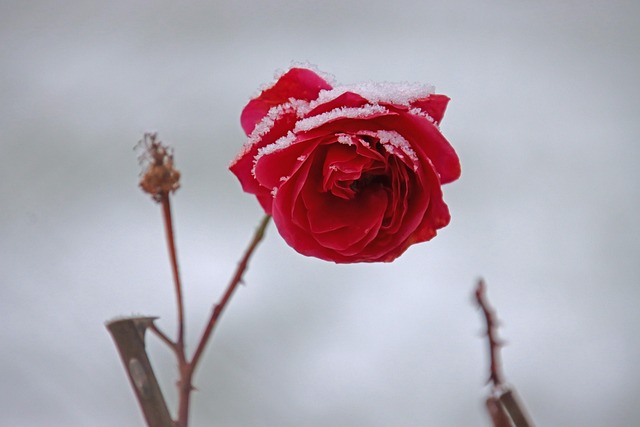In an expression of love to my 16-year-old mother:
For five long years, I yearned to embrace motherhood. My life revolved around medical consultations, hormonal treatments, and the heartache of negative pregnancy tests. Each disappointment was accompanied by tears and the painful weight of loss. The term “barren” echoed in my mind, conjuring images of desolate landscapes.
Yet, I consider myself fortunate. Nine years ago, my miracle arrived—his name is Alex, and he is the most incredible person I know.
My entry into the world was quite different from what I had hoped for. It was unplanned and uncelebrated, a situation that was catastrophic for my mother. Just 36 hours after her 16th birthday, she went into labor. My father was also just 16. It was 1974, a time when attitudes were shifting, yet societal stigma still surrounded unwed teenage mothers. The word that resonates with me when I think of my young mother is “ignominious,” a term I first encountered in Hawthorne’s The Scarlet Letter.
For five months, my mother attempted to conceal her pregnancy beneath flowy, smock-style tops that were fashionable at the time. My grandmother, only 39, discovered her daughter’s condition while managing a busy life as a working divorcée with five children.
Consequently, my mother was withdrawn from school and confined to their home, except for doctor appointments. The consensus among my family was that adoption would be the best course of action, allowing them to keep the entire ordeal under wraps.
When the time came for her to give birth at Mt. Holly Memorial Hospital in New Jersey, my mother endured labor in silence. Hospital protocols prohibited anyone but spouses from being present, and as my parents were not married, she faced the experience alone, surrounded by nurses who likely judged her harshly. After more than a day of labor, she underwent an emergency C-section. I cannot fathom the isolation she must have felt.
Reflecting on my own adolescence, I recognize how my insecurities obscured the beauty of my developing womanhood. My mother, however, never had the chance to appreciate her own blossoming. Instead, pregnancy left her with deep stretch marks and a scar from surgery that resembled a dissection—reminders of a lost youth. Though I’ve always found her beautiful, I understood the weight of her scars.
Unlike many teenage mothers, my family chose not to give me up for adoption. Upon returning home from the hospital, my 8-year-old aunt, who had been unaware of the pregnancy, exclaimed, “She’s cute. Can we keep her?” Within six weeks, my parents married. My mother completed her education through a local alternative program, while my father obtained his GED and a job. Until I was 9, I was raised in a bustling household filled with family members, a collective effort that shaped my upbringing.
My grandmother occupied dual roles as both caregiver and grandparent. Parent-teacher conferences were an enigma, as we didn’t fit neatly into any conventional family model. There was a lingering scandal associated with our situation.
Looking back, I realize that our shared experiences—canoe trips, adventures at Disney World, and lazy days at the beach—were beneficial to both of us. My mother often displayed a youthful spirit, laughing and ensuring my childhood was filled with joy (I was her Pearl). I admired her as she dressed up, applying makeup and donning dresses that perfectly matched her shoes, knowing none of my friends had such a young and beautiful mother.
Of course, being raised by someone still learning how to care for herself posed challenges. The journey was a learning curve for us both, but love was ever-present. In many ways, we grew up together. I often reflect on how my life would have differed if I had been responsible for nurturing a small, fragile being at 16—no slumber parties, no carefree chats about boys, no late mornings.
As I prepared for college at 17, I grasped that my mother’s aspirations were stifled not only by societal expectations of women but also by the obligations she had towards me. Finding a stable partner while navigating divorce, stretch marks, and motherhood was hardly a promising scenario.
At 19, I would pluck gray hairs from her head during car rides, marveling at how young she still seemed. By age 21, I could have been the mother of a 5-year-old who could write complete sentences, yet I was off on a road trip to the Yukon with a new acquaintance.
By 32, I still hadn’t become a mother. The thought of having a 16-year-old child or even being a grandmother at that age was unfathomable to me. My life felt like it was just beginning.
At 40, I pondered how my grandmother must have felt when I was born. Did she worry for her daughter’s future, just as I worried for mine?
My mother and I often joke about growing old together, sharing stories and experiences. We have evolved into not just mother and daughter but also friends and sisters. I consider myself incredibly lucky to be her daughter, and I am deeply proud of my young mother.
For those exploring the journey of motherhood, consider delving into the world of home insemination with resources like this insightful article. They also provide practical tools for the process, such as this kit. For more in-depth information on artificial insemination, this Wikipedia page serves as an excellent resource.
In summary, my young mother’s story is one of resilience and love, highlighting the complexities of teenage motherhood and the strength that can emerge from adversity.
Keyphrase: Teenage Motherhood
Tags: [“home insemination kit”, “home insemination syringe”, “self insemination”]
